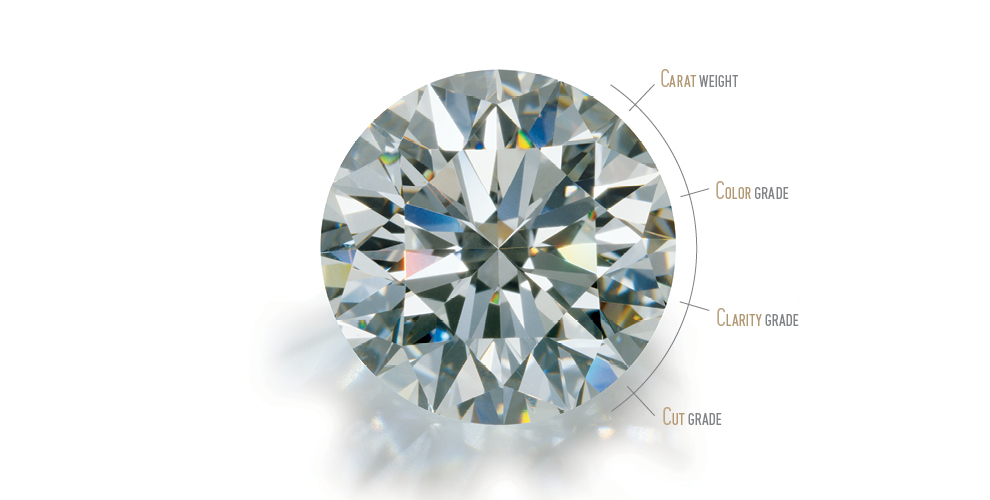Introduction
Welcome to the comprehensive guide on understanding the Diamond 4C Chart! Whether you’re a diamond enthusiast, a first-time buyer, or simply curious about what makes diamonds unique, this article will delve into the essential factors that define a diamond’s quality and value.
History of the Diamond 4C Chart
The concept of the 4Cs—Cut, Color, Clarity, and Carat Weight—was introduced by the Gemological Institute of America (GIA) in the mid-20th century diamond 4c chart. This standardized system revolutionized the diamond industry by providing a universal language to assess and compare diamonds objectively.
Overview of the 4Cs
At its core, the Diamond 4C Chart evaluates diamonds based on four key characteristics: Cut, Color, Clarity, and Carat Weight. Each “C” plays a crucial role in determining a diamond’s brilliance, beauty, and overall worth.
Diamond Cut
The cut of a diamond refers not to its shape (like round or princess), but to its proportions, symmetry, and polish. A well-cut diamond reflects light brilliantly, creating sparkle and fire that captivate the eye. Whether it’s a classic round cut or a modern princess cut, the precision of the cut directly impacts the diamond’s visual appeal and value.
Diamond Color
Diamonds are graded on a scale from D (colorless) to Z (light yellow or brown). The less color a diamond has, the higher its rarity and value. While color preferences vary, diamonds with higher color grades (D-F) are highly sought after for their purity and brilliance.
Diamond Clarity
Clarity measures the presence of internal and external flaws, known as inclusions and blemishes, within a diamond. The clarity scale ranges from Flawless (FL) to Included (I3). Diamonds with fewer inclusions are clearer and more valuable, as they allow light to pass through unimpeded, enhancing brilliance.
Diamond Carat Weight
Carat weight simply refers to the diamond’s weight and size. One carat equals 200 milligrams, and larger diamonds of equal quality are generally more valuable than smaller ones. However, carat weight alone does not determine a diamond’s beauty or worth; it must be considered alongside the other 3Cs.
Factors Influencing Diamond Prices
The value of a diamond is determined by how well it scores on the 4Cs collectively. For example, a diamond with a higher cut grade but lower color grade may be priced similarly to one with a lower cut grade but higher color grade. Balancing these factors ensures you get the best value for your investment.
Choosing the Right Diamond
Selecting the perfect diamond involves understanding your preferences, budget, and the significance of each 4C. Whether you prioritize brilliance, size, or rarity, there’s a diamond that matches your criteria.
Trends in Diamond Preferences
Diamond trends evolve with time and culture. Modern consumers may favor unique cuts and colors that reflect their personal style, while traditional choices like round brilliant diamonds remain timeless classics.
Certification and Grading Labs
Reputable grading labs such as GIA, AGS, and EGL are trusted authorities in diamond certification. Their unbiased assessments provide confidence when purchasing diamonds, ensuring authenticity and quality.
Man made diamonds, also known as lab-grown or synthetic diamonds, are created through technological processes that replicate the natural conditions under which diamonds form in the Earth’s mantle.
Buying Diamonds Online vs. In-Store
Both online and in-store diamond shopping offer advantages. Online platforms provide convenience and extensive inventory, while physical stores offer hands-on inspection and expert guidance. Whichever option you choose, prioritize vendors with established reputations.
Caring for Your Diamond
To maintain its brilliance, diamonds require regular care. Cleaning with mild soapy water and a soft brush keeps diamonds sparkling. Avoid exposing diamonds to harsh chemicals or abrasive materials that can damage their surface.
Investing in Diamonds
While diamonds are symbols of love and luxury, some view them as investments. Understanding market trends and factors affecting resale value is crucial for those considering diamonds as financial assets.
Conclusion
In conclusion, the Diamond 4C Chart provides a comprehensive framework for evaluating diamonds based on Cut, Color, Clarity, and Carat Weight. By understanding these factors and their interplay, you can confidently choose a diamond that matches your preferences, budget, and aspirations. Whether you’re shopping for an engagement ring, a special gift, or a personal indulgence, the 4Cs guide you towards finding the perfect diamond that sparkles with brilliance and beauty.






More Stories
Was passiert, wenn die Steckdose für die Stromschiene überlastet ist?
Edelweiß & Gletscherwasser: Die Geheimzutaten der Schweizer Hautpflege
Wartungsbest Practices für eine längere Lebensdauer von Photovoltaik-Modulen